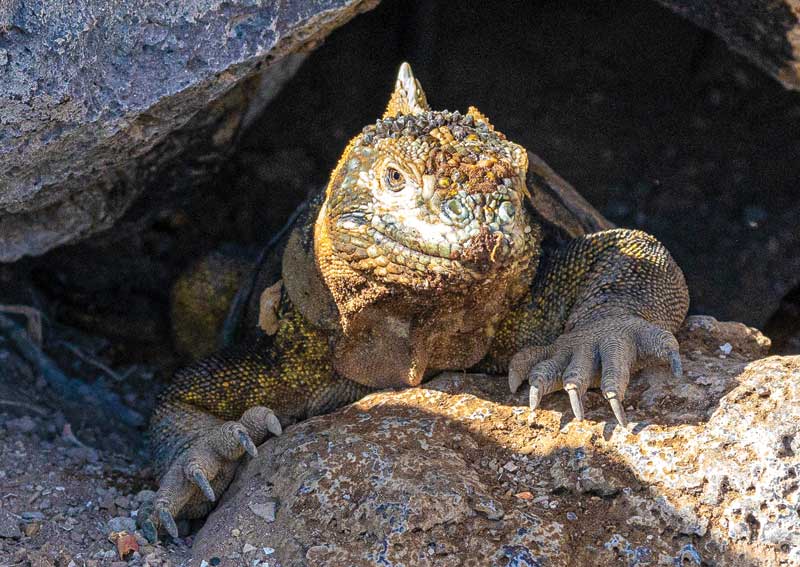
PHOTO COURTESY SARAH RHEA, DVM
Ever since Charles Darwin first visited in 1835, the Galápagos Islands have served as a laboratory and inspiration for scientists—including veterinarians. The unique setting and wildlife, plus the presence of domestic animals, make them a crossroad for studying conservation challenges, evolution and adaptation, biodiversity, genetic analysis, antimicrobial resistance, and emerging infectious diseases in human and animal populations, as well as fostering an appreciation for the ecological importance of the wildlife.
Not all of these topics relate to clinical practice, but they connect to matters of importance to all veterinary professionals, including One Health, epidemiology, animal welfare, and antimicrobial stewardship.
“There’s a lot of things that happen in the Galápagos that benefit from veterinary input,” says Joe Flanagan, DVM, senior veterinarian at the Houston Zoo, who has made multiple trips to the islands to participate in conservation endeavors, from eradicating egg-eating rats and environmentally destructive goats to finding a way to prevent hybrid tortoises from contributing their genes to tortoise populations.
The islands are often thought of as a pristine wildlife sanctuary, but those inhabited by humans are also home to horses, cattle, goats, chickens, cats, and dogs. “It’s a little ecosystem and it’s got all of the needs for veterinary care that animals do here in Houston or anywhere around the world,” says Dr. Flanagan.
Veterinarians who travel to the Galápagos often go for more than a vacation. They volunteer to perform spay/neuter surgeries on dogs and cats, provide other needed veterinary care, perform research, and contribute to wildlife preservation. Often, they are following a lifelong interest.
“My original drive and interest were in turtles and tortoises,” Flanagan says. “The giant tortoises have fascinated me since I was a third-grader or maybe even before. The tortoises tie the ecosystem together. They go from the coast most of the way, up to the highest peaks of the Galápagos. They spread seeds, they mow the lawn, they’re ecosystem engineers. Without the tortoises, the rest of the system, I think, would terribly fail.”
That interest has led him to participate in multiple conservation efforts on the islands.
Preserving wildlife
In conservation circles, hybridization between species, such as cross-breeding between African wildcats or Scottish wildcats and domestic cats, or gray wolves and domestic dogs is considered a potential threat to species survival1 through negative outcomes, such as disease transmission and loss of genetic integrity. In Scotland, a nonlethal management method—trap, neuter, vaccinate, return, or TNVR, of feral domestic cats—is aiding the fight against hybridization.
Tortoises do not typically spring to mind in connection with spay/neuter surgery, but that solution is allowing hybrids to return to a natural life. In the Galápagos, where hybridization has occurred between certain tortoise species, a similar effort enabled hybrid tortoises to be released instead of kept in captivity for the next century or so, or euthanized.
Some hybrid tortoises were produced in captivity when the ancestry of the breeding animals was unknown. When their mixed breeding was identified through genetic testing, Flanagan and other veterinarians were asked if the tortoises could be sterilized. That way, the sterilized animals could be placed on any island with other tortoises without the risk of contaminating the gene pool.
“We sterilized both males and females,” Flanagan says. “I worked with Dr. Steve Divers at the University of Georgia, who’s internationally known as an endoscopic surgeon specialist in reptiles, in particular turtles and tortoises, and Dr. Sam Rivera at the Atlanta Zoo, who’s also a great surgeon.”
Together, they have performed more than 50 tortoise sterilizations.
Flanagan was also involved in restoring tortoises to the seven-square-mile Pinzon Island in the Galápagos, where the population was shrinking and aging due to predation of hatchlings by rats.
In the 1960s, scientists moved to protect the tortoise population by collecting all the nests they could find, raising the babies until they were old enough to be “rat-proof,” and then releasing them in the wild. While helpful, that was only a stopgap. Unless scientists could eradicate all the rats, it would be a never-ending process.
Flanagan and his team began the population restoration by studying the toxicity of rat bait in giant tortoises. Working with captive tortoises of mixed ancestry, they discovered two things: one, the tortoises refused to eat the bait; and when they did, it was not harmful to them. Using an analyzer, Flanagan and his team measured clotting time, prothrombin time, and partial thromboplastin time, finding no change in blood clotting parameters, feeding behavior, or other health issues.
“We were convinced it was a low risk,” Flanagan says.
As it happened, unlike the captive tortoises, the tortoises on Pinzon thought the bait was “candy from heaven.”
“They sucked it up like there was no tomorrow,” Flanagan says. Veterinarians were standing by to administer the reversal—vitamin K—if necessary, but the tortoises showed no ill effects.
The bait was delivered, 10 to 14 days apart. Then they waited. It took two years to confirm all the rats were gone, and for the first time in a century, baby tortoises were hatching and thriving on Pinzon.
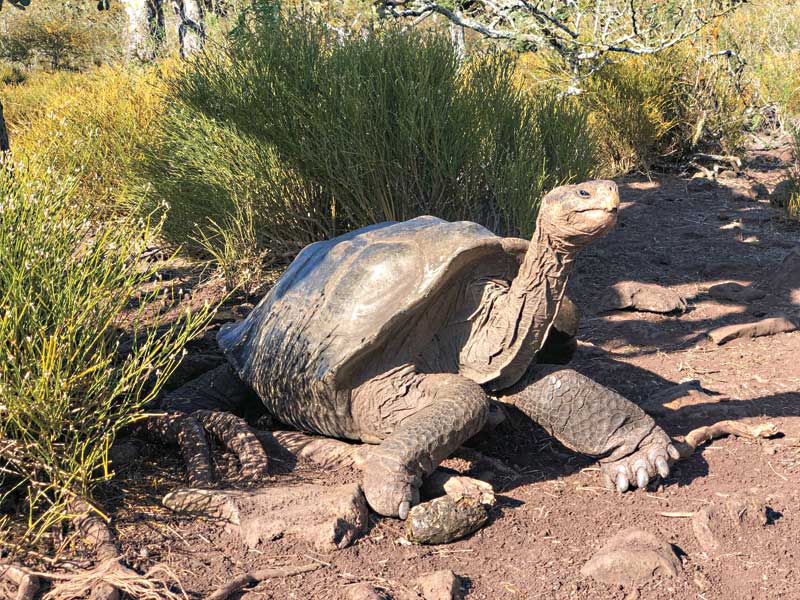
PHOTO BY JERRY M. THORNTON
Research for better farming practices
At the North Carolina State University College of Veterinary Medicine (NC State CVM), assistant professor Sarah Rhea, DVM, MPH, PhD, studies multiple areas of infectious disease epidemiology in human and animal populations. Her goal is to apply traditional epidemiologic methods and disease modeling to address real-world challenges in global health and clinical practice using a One Health approach. Thanks to NC State’s relationship with the Galápagos Science Center—affiliated with the University of North Carolina at Chapel Hill and Universidad San Francisco de Quito.
Dr. Rhea presented a study2 last June at the 5th Galápagos Research and Conservation Symposium. The topic: livestock production practices and presence of extended-spectrum beta-lactamase-producing E. coli (ESBL E. coli) in food-producing and companion animals on small-holder farms on the Galápagos island of Floreana.
“I was particularly interested in this relationship of antimicrobial resistance in these areas where there’s a lot of permeability between where wildlife come and go and where livestock are,” Rhea says.
Both geographically and in human population numbers, Floreana is the smallest of the four human-inhabited Galápagos islands. That added a unique feature to her research and provided more of a controlled environment.
The ESBL E. coli bacteria, which can colonize animals and people without causing disease, were of interest because of their resistance properties. They are a good epidemiologic surveillance target for many reasons, including because they can be looked at across populations, as well as in water and soil. The study2 was loosely based on the World Health Organization (WHO)’s “Tricycle protocol,” which includes standard antimicrobial resistance surveillance methodologies in human, food chain, and environmental sectors.
“It’s a One Health approach to doing antimicrobial resistant surveillance in settings where surveillance is not established yet across the different sectors,” Rhea says.
Collaborating with local partners, including the farmers of Floreana, the Agencia de Regulación y Control de la Bioseguridad y Cuarentena para Galápagos, Parque Nacional Galápagos, and Universidad San Francisco de Quito, and using multiple U.S. and international assessment standards, Rhea and her team developed a questionnaire to evaluate five basic animal welfare measures—feed and water access, shelter/housing, health management, animal behavior, and timely euthanasia—for poultry, pigs, and cattle. Then, they collected samples and conducted in-depth interviews on livestock management practices with eight producers representing 75 percent of animal agriculture on Floreana.
They identified opportunities to enhance competencies in animal health management and timely euthanasia, but the farms performed well in the other assessed measures. Rhea hopes future research will promote improved farm biosecurity, access to veterinary care, antimicrobial resistance surveillance, and euthanasia methods.
When Rhea returned to give her presentation at the symposium, she was also able to share her results with the farmers. That was a unique experience for her and captured the interest of symposium attendees as well. “It opened up, I think, areas for technical support if our team could be helpful in the future. It was a very good experience.”
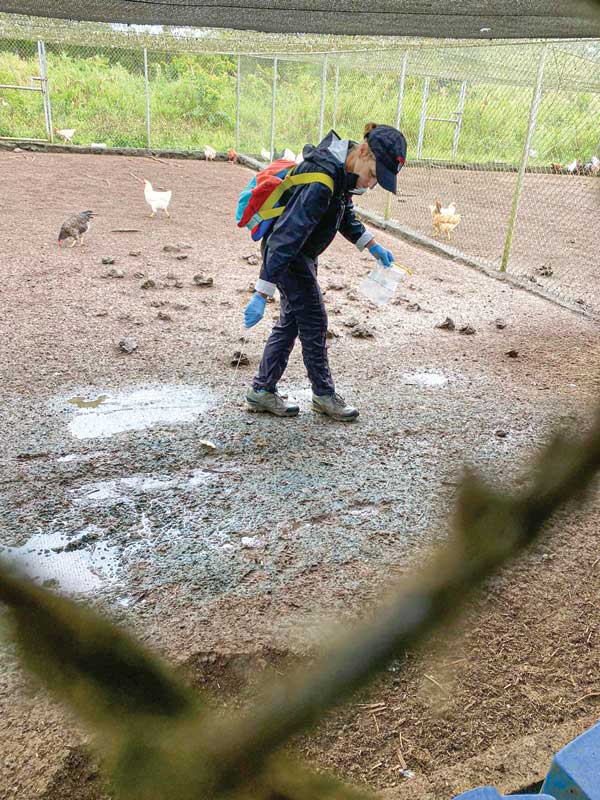
PHOTO COURTESY SARAH RHEA, DVM
Galápagos wildlife at risk from traffickingA lab run by the Galápagos National Park uses genetic screening tools to identify tortoises and iguanas confiscated from wildlife traffickers caught before leaving the islands. “They can figure out what population they’re from and reintroduce them back to that population,” says Dr. Flanagan. Animals identified after they have been taken from the Galápagos cannot be returned for fear of introducing disease. State laws vary on the duty of veterinarians who suspect that an animal has is being kept illegally. Check with state wildlife authorities if concerned. |
What’s the relevance to non-Galápagos veterinarians?
In short, it is a model for other places. In the study,2 Rhea writes: “Efforts to positively impact smallholder farm livelihoods in Galápagos—one of the most biodiverse and protected ecosystems on the planet—will sustainably support human health through the interconnected realms of animal health and welfare, wildlife and environmental health, and food safety and security.”
It’s more than that, though. Like everyone who has visited, Rhea comes back to the unique location and status of the islands.
“It captures the imagination. It really makes you appreciate how precious this type of setting and resource is, especially with climate change, and why it’s so important to see in person some of these unique animals and the relationships between the One Health.”
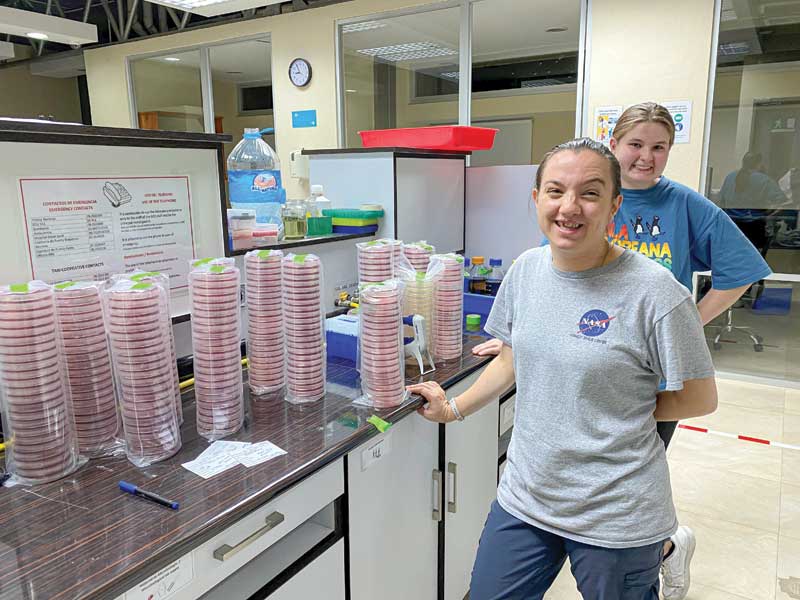
Continuing education
Some veterinarians travel to the Galápagos for professional growth or to share their skills by volunteering for spay/neuter programs or providing other care to domestic animals, wildlife, or marine life. Beyond volunteer programs, they can take continuing education courses that not only broaden their perspective on the animal world, but also enhance adaptability and problem-solving skills in their own environment. Richard A. LeCouteur, DVSc., PhD, diplomate ACVIM (Neurology), recently made his seventh trip there, leading an excursion for Veterinary Expeditions LLC, a company that offers RACE-approved credits to attendees. “It is no junket,” Dr. LeCouteur says.
“It’s an opportunity for veterinarians to learn about where conservation and wildlife health come together, understanding about disease and how it impacts species’ survival, the health of the ecosystem, the unusual pathogens around the world.”
Besides offering opportunities to study such wide-ranging topics as biodiversity, the plight of the flightless cormorant, the effects of climate change on the three major ocean currents that intersect in the islands, or the ways introduced species impact endemic wildlife, the trips are designed to promote mental health in the profession. Going to the Galápagos can validate a veterinarian’s love for animals and the wonder of nature—the reasons many became veterinarians in the first place.
“Going to the Galápagos is so much more than a trip to see the wildlife and the ecosystems and the magnificent landscapes,” LeCouteur says. “I really believe it’s a spiritual experience. To embrace it and soak in everything that is around you is to understand deep down why you love animals and why you are a veterinarian. I think it provides an aspect of personal and professional growth that is unique.”
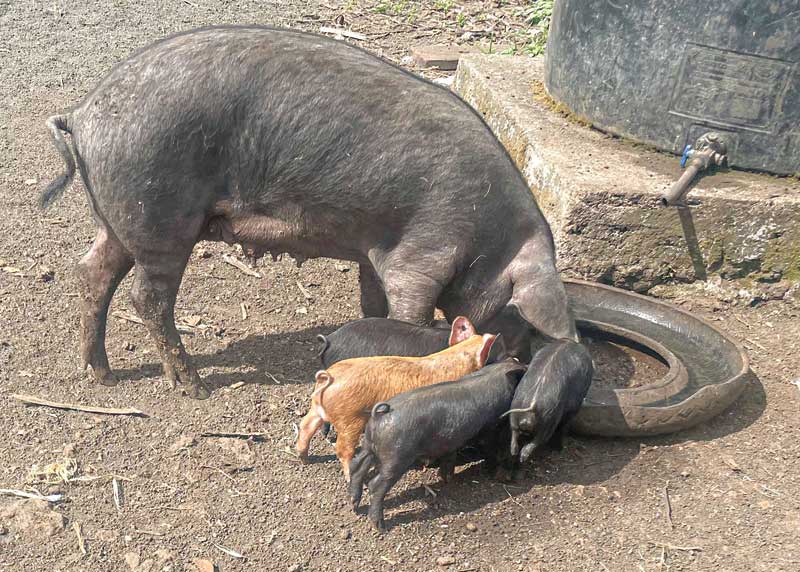
Kim Campbell Thornton has been writing about dogs, cats, wildlife, and marine life since 1985, and is a recipient of multiple awards for her articles and books from the Cat Writers Association, Dog Writers Association of America, and American Society of Journalists and Authors.
References
- Adavoudi R, Pilot M. Consequences of Hybridization in Mammals: A Systematic Review. Genes (Basel). 2022. 13(1): 50.
- Rhea S, Camacho BE, Amoriello CW, Correa M, Lewbart GA, Cruz M, Vélez A, Castillo P, Pairis-Garcia M. Assessing Livestock Production Practices on Small-Scale Multi-Species Farms Located on Floreana Island, Gálapagos Islands. Animals. 2023. 13(4), 686; https://doi.org/10.3390/ani13040686.
